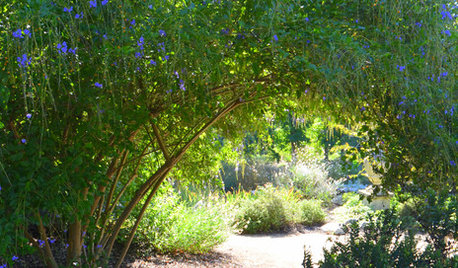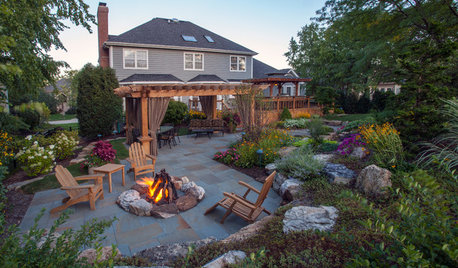Heat zones.
okiehobo
12 years ago
Related Stories

FLOORSWhat to Ask When Considering Heated Floors
These questions can help you decide if radiant floor heating is right for you — and what your options are
Full Story
FLOORSFloors Warm Up to Radiant Heat
Toasty toes and money saved are just two benefits of radiant heat under your concrete, wood or tile floors
Full Story
BATHROOM DESIGNWarm Up Your Bathroom With Heated Floors
If your bathroom floor is leaving you cold, try warming up to an electric heating system
Full Story
FLOWERS AND PLANTSHeat-Loving Duranta Erecta Blooms From Spring Into Early Fall
Golden dewdrops, a versatile tropical shrub, has delicate purple and white blossoms
Full Story
GREAT HOME PROJECTSHow to Add a Radiant Heat System
Enjoy comfy, consistent temperatures and maybe even energy savings with hydronic heating and cooling
Full Story
GARDENING GUIDES10 Cold- and Heat-Tolerant Perennials and Shrubs for the Arid West
These flowering native plants shrug off the cold of winter and heat of summer while adding beauty to the drought-tolerant landscape
Full Story
GARDENING GUIDES10 Drought-Tolerant Shrubs That Thrive in Full Sun and Reflected Heat
Got a hot spot in your garden where plants often die? Try these tough shrubs that add beauty while shrugging off the heat
Full Story
FLOORSIs Radiant Heating or Cooling Right for You?
Questions to ask before you go for one of these temperature systems in your floors or walls (yes, walls)
Full Story
GREEN BUILDINGInsulation Basics: Heat, R-Value and the Building Envelope
Learn how heat moves through a home and the materials that can stop it, to make sure your insulation is as effective as you think
Full Story
GARDENING AND LANDSCAPING3 Ways to Bring the Heat to Outdoor Living Spaces
Here’s what to know about surviving winter’s bite with an outdoor fireplace, fire pit or heat lamp
Full Story






wantonamara Z8 CenTex
Okiedawn OK Zone 7
Related Professionals
Wrentham Landscape Architects & Landscape Designers · Piqua Landscape Architects & Landscape Designers · Taylorsville Landscape Architects & Landscape Designers · West Chester Landscape Architects & Landscape Designers · Burlington Landscape Contractors · The Woodlands Landscape Contractors · Waterford Landscape Contractors · West Palm Beach Landscape Contractors · Wethersfield Landscape Contractors · Chicago Ridge Landscape Contractors · Ferguson Landscape Contractors · Coronado Decks, Patios & Outdoor Enclosures · Bethany Decks, Patios & Outdoor Enclosures · Blue Springs Decks, Patios & Outdoor Enclosures · Boston Decks, Patios & Outdoor Enclosuresslowpoke_gardener
slowpoke_gardener
wantonamara Z8 CenTex
elkwc
okiehoboOriginal Author
Maryl (Okla. Zone 7a)
slowpoke_gardener